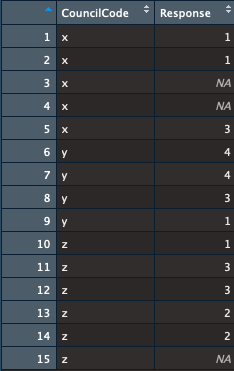Hi All,
I've just set out using R Studio and wondered if someone could help me create a column that counts the eligible responses to a survey we have sent out at the NHS.
I have three columns:
Council code
Question Response (1-4 or 'NA')
Total Eligible Responses
I need the 'Total Eligible Responses' column to be the number of valid Question Responses per council. So a count of 'Question Response' (where not NA) grouped by 'Council Code'.
For example if in council A there were 500 valid responses, I would like 500 to be repeated for the whole column alongside council A
I've tried attaching an example but it won't let me!
Cheers for any help!
